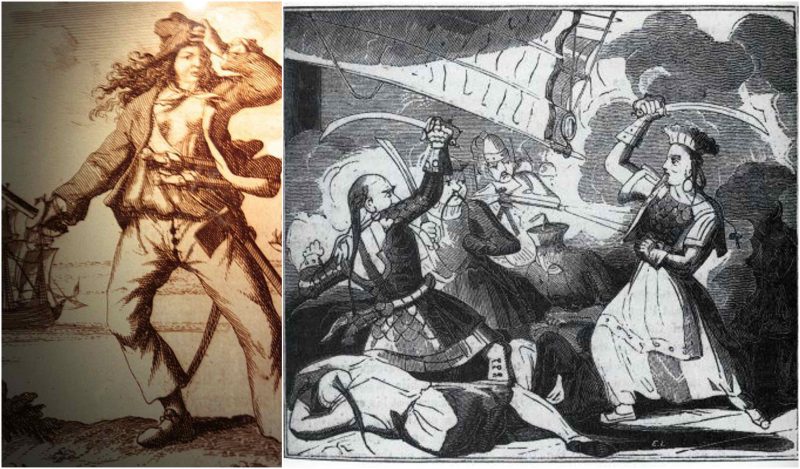During a time when most women were denied an education and kept restrained to their homes, there were some women who were courageous enough to confront all men on their way, to guide, sail, steal and kill. Take a look back at the criminal careers of five of history’s most ferocious seafaring women.
“If there’s a man among ye, ye’ll come up and fight like the man ye are to be!” – Mary Read
Cheng I Sao
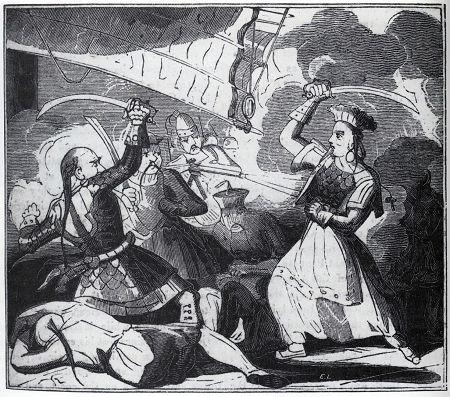
In records, she is called Zheng Shi, Madam Ching, Ching Shih, and variations on these names: all of them mean wife or widow of Cheng I. (The Disney film Pirates of the Caribbean: At World’s End calls the character based on her Mistress Ching.)
She was born sometime around 1775 and according to the legend she was a prostitute in a Cantonese floating brothel and that she refused Cheng’s proposal until he promised to give her half of his fleet and a share of his command. The Cheng Pirate Duo boasted hundreds of ships and some 50,000 men, and it preyed on the fishing vessels, supply junks and the coastal villages of Southern China with impunity.
After the death of her husband in 1807, Ching Shih immediately began maneuvering her way into his leadership position. She started to cultivate personal relationships to get rivals to recognize her status and solidify her authority. She appointed Chang Pao, her husband’s adopted son, leader of the Red Fleet, the most powerful of the six fleets that made up the pirate confederation. Soon after they became lovers.
Over the next few years, she plundered her way across Southeast Asia and assembled a fleet that rivaled many countries’ navies. She also penned a rigorous code of conduct for her pirates. Rape of female prisoners was punishable by beheading, and deserters had their ears lopped off.
Fleets sent by the Chinese Imperial Navy to destroy the pirates were themselves destroyed. When the Imperial government solicited assistance from British and Portuguese warships, Cheng I Sao decided to retire from piracy. In April 1810, she negotiated terms of an amnesty with the Governor General of Canton.
A wealthy woman, she ran a gambling house and possibly a ring of smugglers, but otherwise led a quiet life until her death in 1844. She was 69 years old.
Anne Bonny
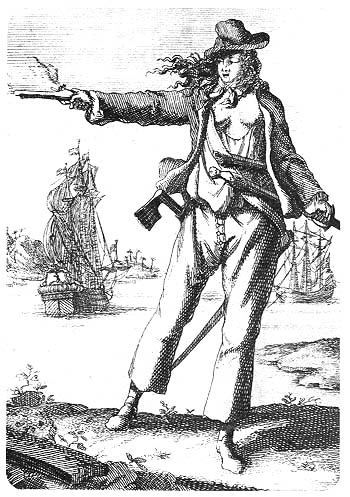
The notorious pirate Anne Bonny began her life as the illegitimate daughter of a wealthy Irish lawyer. In an effort to hide her dubious parentage, her father had her dress a boy and pose as his law clerk for part of her youth.
Later, marrying Anne’s mother, her father set up in Charleston, first as a lawyer and then as a merchant. Her father had done quite well in his businesses and it was expected that Anne would marry well. Instead, she fell in love with a small-time pirate, James Bonny, who just wanted her estate. In 1718 she married him when she was only 16 and together traveled to the island of New Providence in the Bahamas.
James had a hard time supporting her, and in the end, he became a pirate informer for the governor. Anne was disappointed because she had made many pirate friends. It was at this time that she met pirate “Calico Jack” Rackham (sometimes spelled Rackham) who had recently wrested command of a pirate vessel from the ruthless Captain Charles Vane.
The love relationship between Anne and Calico was not public, but on the ship, everybody knew that Anne was “the captain’s woman.” However, Bonny who had always been known for her “fierce and courageous temper”, was fearless of any other pirate and she quickly showed she could guzzle rum, curse and wield a pistol and cutlass with the best of Calico Jack’s crew.
She later forged a friendship with infamous Mary Read and according to some sailors, Ana and Marry were even in a romantic relationship. It did not take long for the two girls to become good friends. According to some sailors, Ana and Marry were even in a romantic relationship. Bonny’s stint on the high seas was cut short that October when Calico Jack’s ship was captured by a band of pirate-hunters. Calico Jack and several other men were executed, but Bonny and Read dodged the noose after they were both found to be pregnant.
Mary Read
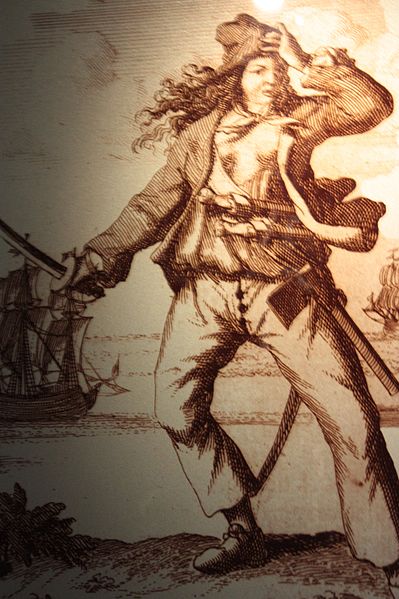
Mary’s father had died before she was born and her half-brother Mark passed away soon afterward. Mary’s paternal grandmother supported Mary and her mother, only because she thought that her grandson Mark was still alive when it was actually Mary who was raised as her brother. Hoping to quench her thirst for adventure, she later adopted the name Mark Read and took on a succession of traditionally male jobs, first as a soldier and later as a merchant sailor.
Mary was fighting for the British in Holland and later took a ship to the West Indies. Read’s ship was attacked and captured by pirates. Read decided to join them and for a while lived the life of a pirate in the Carribean andShe later found her way aboard Calico Jack Rackham’s boat, where she met and befriended Anne Bonny and revealed herself to be a woman. Being only women on the ship and sharing a lot in common, they quickly became good friends.
Even though Read only sailed with Calico Jack for a few months, during that time she won a fearsome reputation. One of her most famous exploits came in 1720 when she and Bonny fought like banshees during an attack by pirate-hunters. Apparently, during the fight, Read yelled: “If there’s a man among ye, ye’ll come up and fight like the man ye are to be!”
Despite Read’s heroics, she and the rest of Calico Jack’s crew were captured and charged with piracy. Read avoided execution by admitting she was “quick with child,” but she later came down with a fever and died in prison.
Grace O’Malley
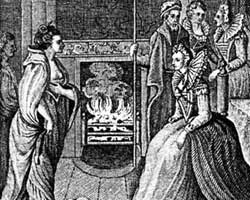
Grace O’Malley (also called Granuaile) was a famous pirate, seafarer, trader and chieftain in Ireland in the 1500’s. She was born in 1530 in County Mayo, Ireland and was the daughter of sea captain Owen O’Malley. As a young child, Grace always knew she wanted to be a sailor but as a female, she was discouraged repeatedly.
According to the legend, Grace cut off all her hair and dressed in boys clothes to prove to her parents that she could handle the trip and live a seafarer’s life. Seeing this, her father and brother laughed aloud and nicknamed her “Grainne Mhaol” meaning “Bald Grace” (which is believed to have led to her nickname “Granuaile.”) Eventually, through her persistence, she was allowed to go to sea with her father and his fleet of ships.
In her later years, Grace developed her reputation as a fearless leader through her efforts in battle alongside her followers. Legend has it that Grace gave birth to one of her sons while out to sea. The very next day following the birth of the baby, the ship was attacked by Turkish pirates. Though exhausted from giving birth Grace grabbed a gun, went on deck and proceeded to rally her men against the Turks, forcing their retreat.
Her escapades were legendary but they also drew the ire of the authorities. She was forced to repel a siege against her stronghold at Rockfleet Castle in 1574, and later did 18 months behind bars after she was captured during one of her raids. O’Malley resumed her marauding after her release, but more trouble arrived in the early 1590s when British authorities impounded her fleet. In 1593, when her sons, Tibbot Burke and Murrough O’Flaherty were taken captive, O’Malley sailed to England to petition Elizabeth I for their release. The gambit worked, but it seems that “Granuaille” didn’t keep up her end of the bargain—records show that she and her sons continued pirating until her death in 1603.
Rachel Wall
Ever since her young age, Rachel Wall was unsatisfied with her life and longed for the waterfront and sea. During one of her visits to the harbor at the age of 16, she became under attack from the group of local girls only to be saved by the man named George Wall. The pair quickly fell in love, and they married despite growing concern from her family.
The couple settled in Boston and tried to scrape out a living, but constant money problems eventually led them to turn to a life of crime. In 1781, the Walls procured a small boat, teamed with a few low-life mariners and began preying on ships off the coast of New England.
Their strategy was as ingenious as it was brutal. Whenever a storm passed through the region, the buccaneers would dress their boat up to look like it had been ravaged by rough seas. The comely Rachel would then stand on the deck and plead for aid from passing ships. When the unsuspecting rescuers came near, they were promptly boarded, robbed and murdered.
After her husband George Wall was killed in a storm, Rachel continued to steal but this time pirating across the land, not the sea. Eventually, she was captured and charged with a death sentence. During her trial in 1789, Rachel confessed about her times as a pirate, but she denied ever killing anyone. Judges were not kind to her, and she was executed by hanging October 8, 1789.
According to the historians, her last words were “…into the hands of the Almighty God I commit my soul, relying on his mercy…and die an unworthy member of the Presbyterian Church, in the 29th year of my age “.
She was the last woman ever executed in Massachusetts when she was hanged to death in Boston.
